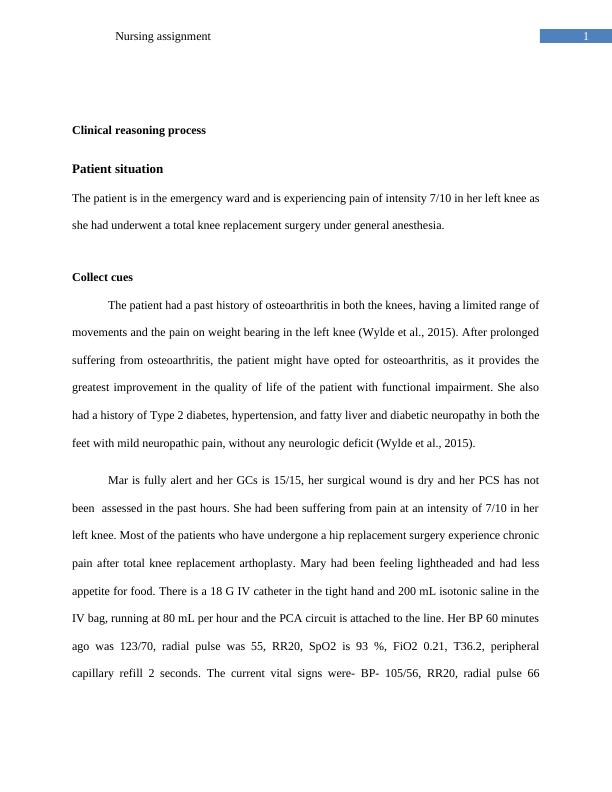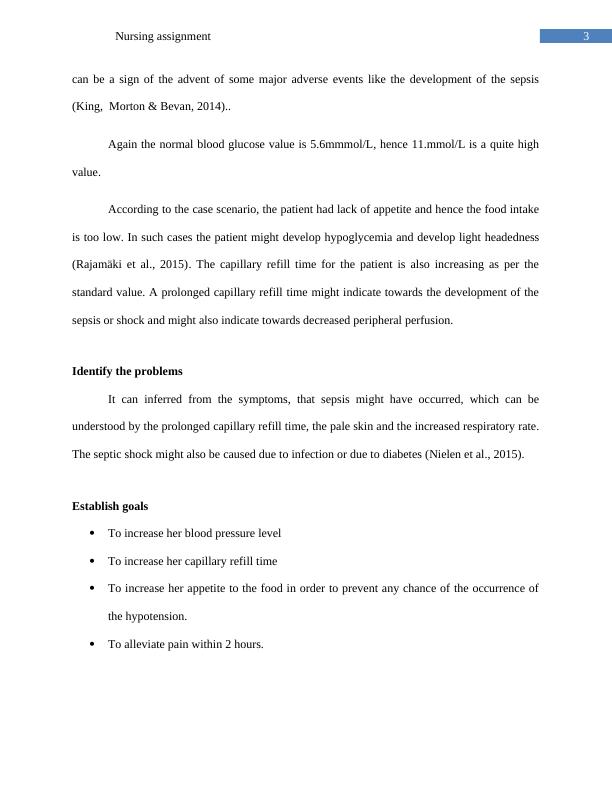Nursing Assignment: Clinical Reasoning Process
Apply the clinical reasoning cycle to a complex scenario in nursing, analyze the case study, identify moments of deterioration, and develop evidence-based nursing interventions. Develop a handover script using the ISBAR communication tool.
12 Pages2536 Words148 Views
Added on 2023-04-23
About This Document
This nursing assignment discusses the clinical reasoning process for a patient who underwent total knee replacement surgery. It includes cues, process information, problem identification, goals, actions, and evaluation. It also suggests interventions for acute pain, diabetes management, increasing oxygen saturation level, and management of blood pressure.
Nursing Assignment: Clinical Reasoning Process
Apply the clinical reasoning cycle to a complex scenario in nursing, analyze the case study, identify moments of deterioration, and develop evidence-based nursing interventions. Develop a handover script using the ISBAR communication tool.
Added on 2023-04-23
ShareRelated Documents
End of preview
Want to access all the pages? Upload your documents or become a member.
CLINICAL REASONING AND DETERIORATING PATIENT.
|14
|3457
|44
DETERIORATING PATIENT: Clinical Reasoning Cycle and Nursing Interventions for Osteoarthritis and Diabetic Neuropathy
|11
|3124
|235
Assignment on Nursing : Case Study
|8
|2442
|57
Nursing Assignment: DETECT Framework for Patient Deterioration
|13
|3077
|171
What do you consider to be normal/abnormal?
|6
|2541
|15
Nursing of Surgical Patient Article 2022
|9
|2574
|28




